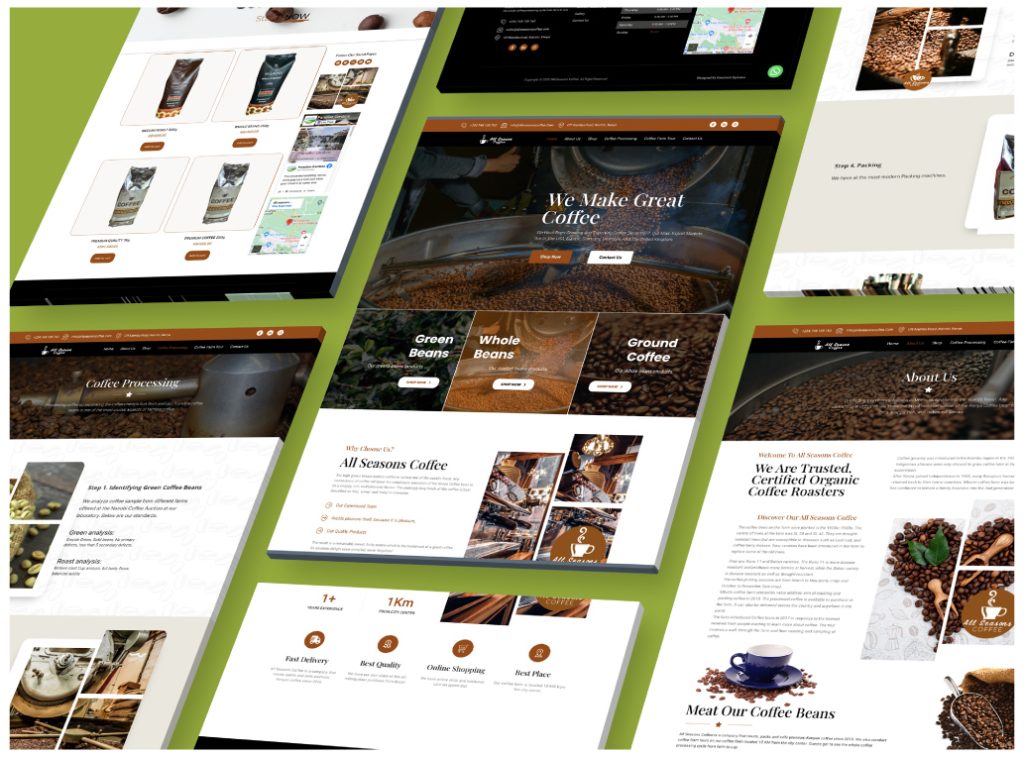In Kenya’s fast-paced and mobile-driven society, businesses must adapt to the preferences of on-the-go users. A mobile friendly website design in Kenya is no longer a luxury; it’s necessary for success in the digital landscape. This article explores the significance of mobile friendly website design and how it optimizes experiences for users browsing on smartphones and tablets. Let’s dive into the world of mobile optimization and its impact on engaging the ever-connected Kenyan audience.
- The Mobile Revolution in Kenya: Kenya has witnessed a significant mobile revolution, with a large percentage of the population relying on smartphones for internet access. Mobile devices have become the primary means of communication, information retrieval, and online shopping. As a result, businesses must prioritize mobile-friendly website design to reach and engage this tech-savvy audience effectively.
- Seamless User Experience: Mobile-friendly website design ensures that users browsing your website on their smartphones or tablets have a seamless and enjoyable experience. The design incorporates responsive elements that automatically adjust to different screen sizes and resolutions. This adaptability eliminates the need for users to zoom or scroll horizontally, enhancing user satisfaction and reducing bounce rates.
- Improved Search Engine Visibility: Google and other search engines prioritize mobile-friendly websites in their search results. This emphasis on mobile responsiveness is part of Google’s commitment to delivering the best user experience. A mobile-friendly website is more likely to rank higher in mobile search results, leading to increased visibility and organic traffic.
- Enhanced Load Times: Load times are crucial for mobile users, who expect quick access to information on the go. Mobile-friendly website design optimizes loading speeds, reducing the time it takes for a webpage to load on a mobile device. Faster load times contribute to lower bounce rates and improved search engine rankings.
- Mobile-Specific Features: A mobile-friendly website design can also incorporate mobile-specific features to enhance the user experience. For instance, “click-to-call” buttons allow users to contact your business from their smartphones quickly. Similarly, “tap-to-navigate” buttons enable quick access to your physical location using navigation apps. These features add convenience for users and encourage interactions with your business.
- Capturing the Mobile Shopper Market: The rise of mobile e-commerce presents a significant opportunity for businesses in Kenya. Mobile-friendly website design is essential for capturing the mobile shopper market. A seamless e-commerce experience on mobile devices encourages users to purchase and boosts online sales.
Mobile Friendly Website Design Kenya: Optimized Experiences for On-the-Go UsersMobile friendly website design in Kenya is no longer an option; it’s a fundamental necessity for businesses looking to succeed in the digital era. Optimized experiences for on-the-go users, improved search engine visibility, enhanced load times, and mobile-specific features are all essential elements of a successful mobile-friendly website.
By prioritizing mobile-friendly website design, businesses in Kenya can connect with their audience on the devices they use most frequently. Embrace mobile optimization as a strategic investment in engaging the ever-connected Kenyan audience and unlocking the potential of the mobile revolution for your business’s growth and prosperity.













